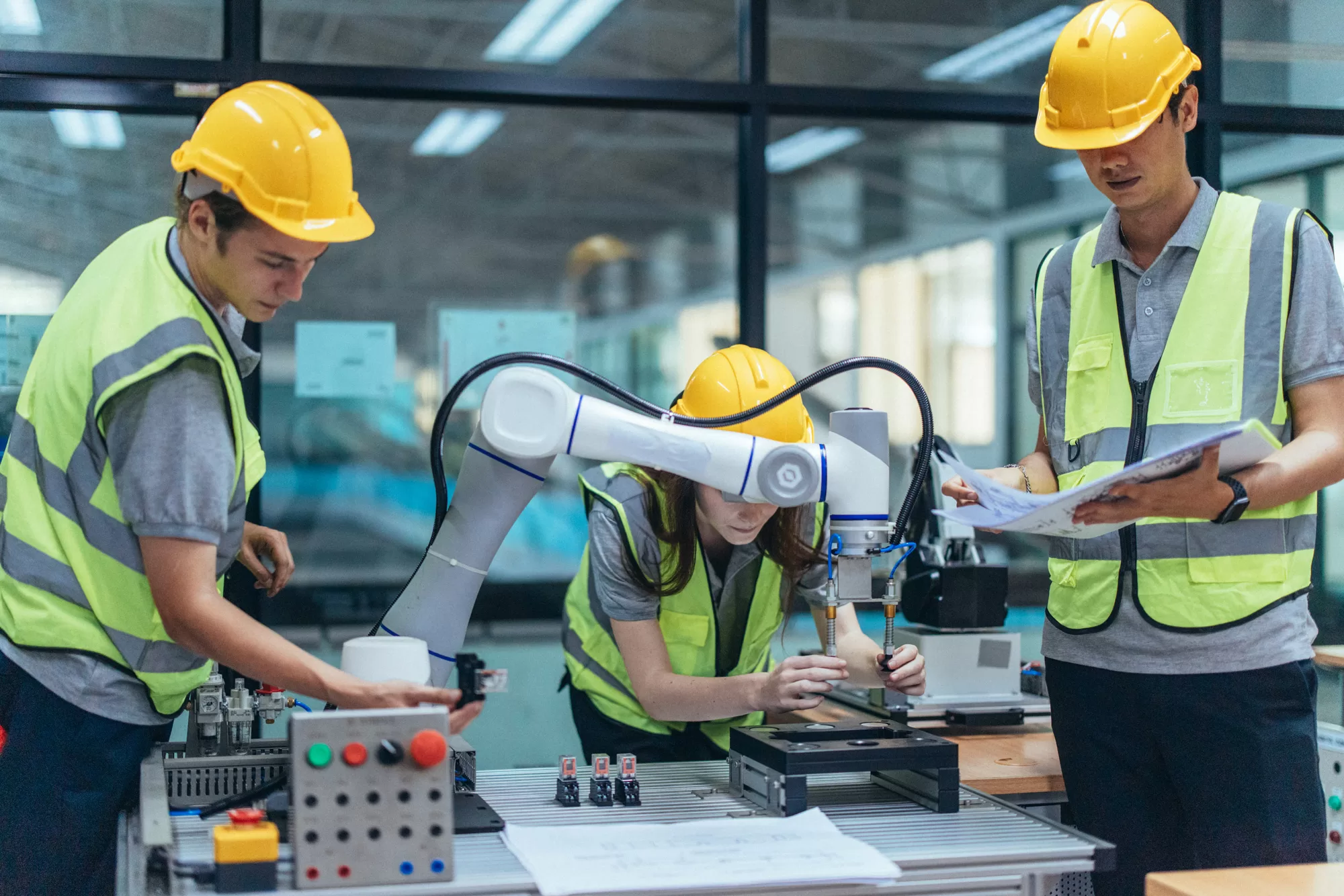The Evolution of Workforce Education:
Trends Shaping the Next Generation of Learning Spaces
The Role in the Design of Career and Workforce Advancement Spaces
The landscape of K-12 education is undergoing a profound shift as school districts, community colleges, and universities adapt to meet the needs of a rapidly evolving workforce. With less than half of U.S. jobs projected to require a four-year college degree by 2030 — and industries across sectors struggling to fill critical roles — the demand for career-connected learning and workforce-focused education has never been greater. This reality is reshaping the way educational facilities are planned, designed, and utilized, particularly in career and technical education (CTE) and workforce training programs.
Career Awareness, Exploration, and Practicum Spaces in K-8
The foundation for workforce readiness doesn’t begin in high school — it starts in elementary and middle school, where students begin forming their understanding of career opportunities and skills development. The design for John S. McCain III Elementary School embraces this philosophy, creating flexible learning communities with hands-on maker spaces, inquiry zones, and technology-rich labs designed to nurture curiosity, collaboration, and critical thinking.
At Pendergast Elementary School District, the reimagination of their campuses places career-connected learning at the forefront, embedding Career Awareness Zones where students encounter career-themed projects and industry-inspired challenges right alongside core curriculum. These exploratory spaces — blending technology, biophilic design, and adaptable collaboration areas — mirror the modern workplace while fostering early career curiosity.
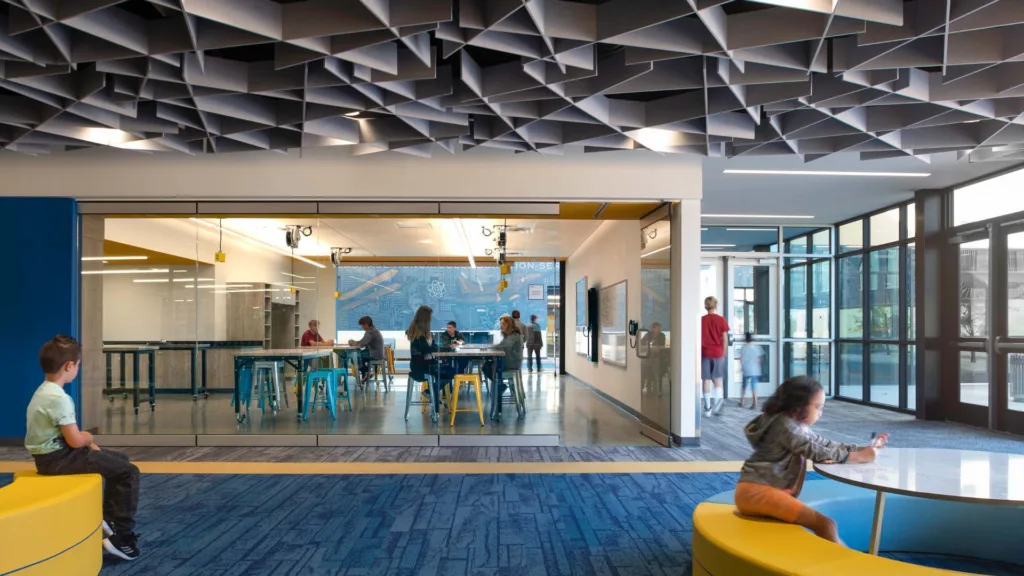
Industry-Embedded Learning Spaces in High Schools
By high school, the need for real-world, hands-on learning intensifies. Modern high school CTE programs are reimagining traditional “shop class” into academy-based learning environments where students work alongside industry partners using professional tools and technology.
At West-MEC Northeast Campus, a cutting-edge training environment for Advanced Manufacturing, Digital Welding, and Electric Vehicle Servicing was designed to blend flexible project bays, collaborative innovation commons, and real-world simulation labs.
The Mesa High School CTE Reimagination similarly transforms career and technical education into high-tech career academies, where students gain certifications in fields like digital media, health sciences, and advanced trades — ensuring they graduate both diploma- and workforce-ready.
The Crismon High School Academy Model offers modular academies for STEM, Health Sciences, Electrical Power Distribution, and Design & Drafting — each academy is designed to flex with evolving workforce needs. These adaptable hubs combine traditional classrooms, project-based breakout spaces, and hands-on maker labs, all centered around a community-focused central commons that fosters both academic and social engagement.
At Eastmark High School’s STEAM Academy, flexible learning pods and certification-based academies blur the lines between classroom and career training, offering students early pathways into high-demand industries — from health services to performing arts and design thinking.
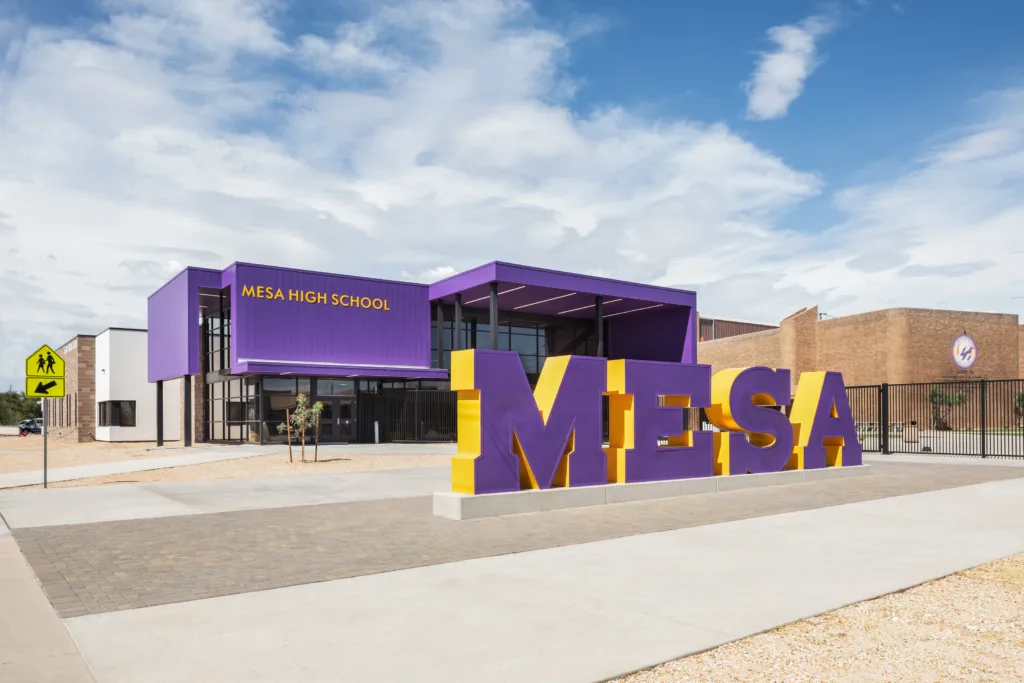
Technology Integration — AI, Simulation, and Immersive Learning
The reimagined workforce education space is increasingly technology-driven, integrating tools that mirror real-world work environments. At Dignity Health Chandler Regional Medical Center, a Surgical Simulation Lab was designed equipped with a da Vinci Surgical System, allowing future healthcare professionals to master robotic surgery techniques before entering the operating room.
This emphasis on immersive, tech-enabled learning extends into secondary and post-secondary projects like West-MEC, where simulation labs for healthcare, aviation, and advanced manufacturing allow students to work in high-fidelity, real-time environments, developing both technical mastery and workplace confidence.
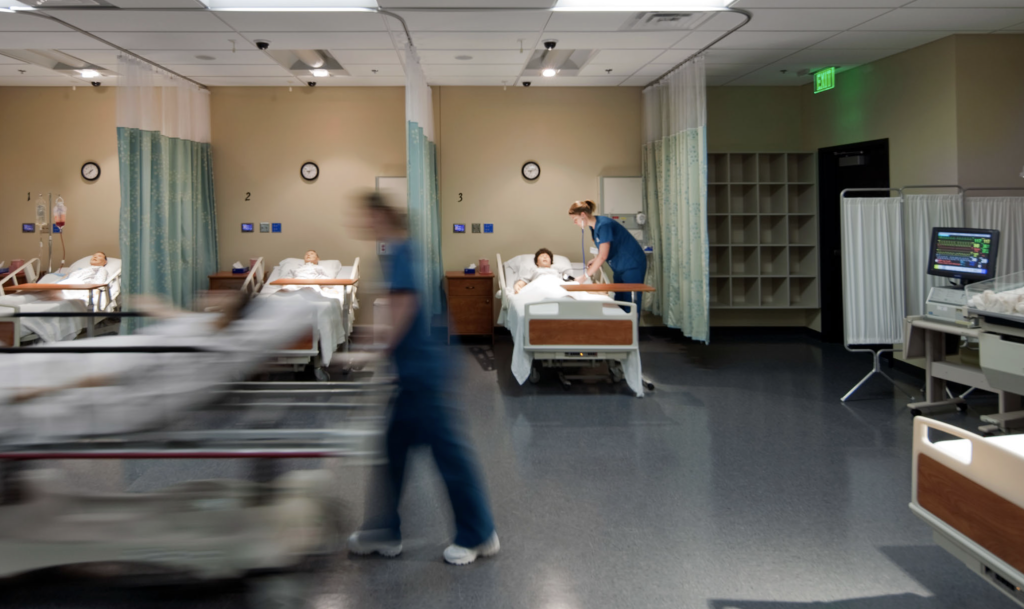
Across projects, technology that can be integrated:
- AI-powered smart manufacturing tools into CTE labs, preparing students for data-driven industries.
- VR and AR environments that simulate everything from construction site safety to complex medical procedures.
- Hybrid collaboration zones where students and industry mentors engage in virtual and hands-on project work.
Career Launch Pads in Higher Education
Higher education is no longer about theoretical career prep — it’s about embedding workforce development directly into the student experience. The Roland G. Parrish Center for Career Planning and Development at Fisk University serves as a campus hub for career coaching, industry partnerships, and professional development, ensuring every student graduates with both academic credentials and workforce connections.
At Tennessee College of Applied Technology (TCAT) Hartsville, a new Administration and Technical Building (opening 2026) will merge classroom learning with hands-on industry training, outdoor collaboration zones, and flexible labs designed to flex with Tennessee’s evolving workforce needs — from advanced manufacturing to renewable energy technologies.
Workforce Facilities as Regional Economic Anchors
Modern workforce education spaces are increasingly dual-purpose economic anchors, serving both students and local industry. At West-MEC, the Community/Industry/Innovation Commons is designed to:
- Host career fairs and industry showcases.
- Offer co-working space for educators, students, and industry mentors.
- Support adult workforce retraining programs during evenings and weekends.
Similarly, TCAT Hartsville’s outdoor learning commons creates an open collaboration zone where local businesses, community partners, and students co-create solutions to real-world challenges — blending education and economic development into a single ecosystem.
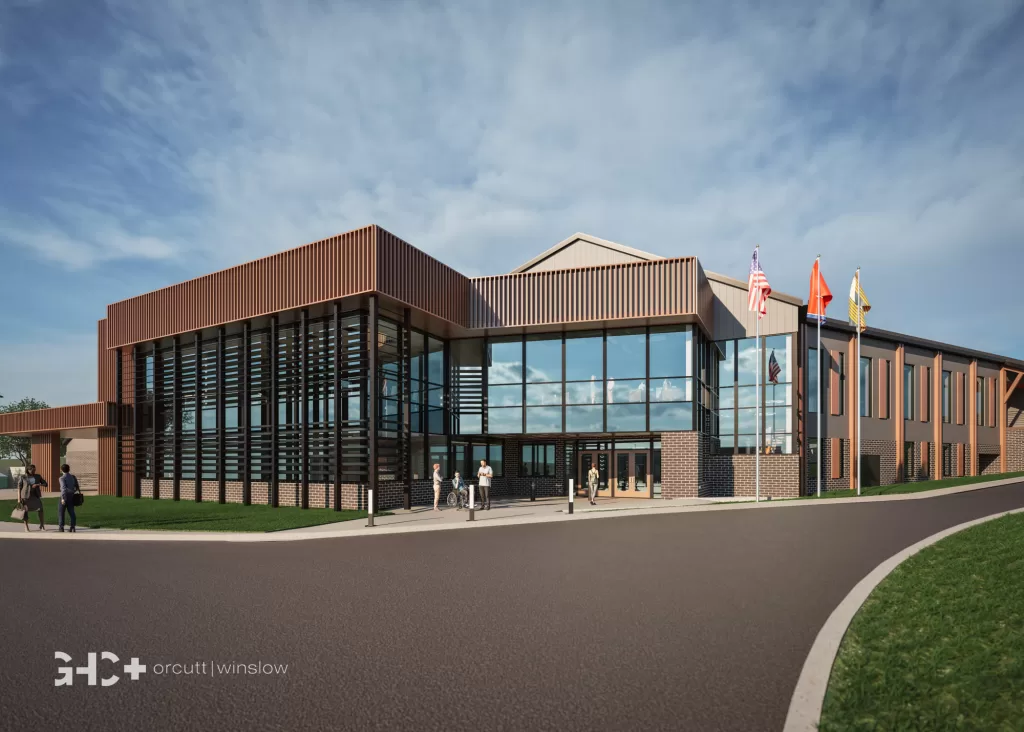
Team-Based Teaching and Distributed Expertise
At Villa de Paz Elementary School, the design supports team-based, multi-grade learning communities inspired by ASU’s Next Education Workforce Model. Each learning community combines general education teachers with specialists in art, music, STEM, physical education, and intervention — offering distributed expertise that mirrors the collaborative, multidisciplinary work environments students will enter after graduation.
Integrated Arts and Workforce Readiness
Workforce readiness doesn’t only apply to STEM and trades — creative careers are a critical part of the economy. At Harpeth Hall’s Bullard Bright IDEA Lab in Nashville, a flexible innovation space was designed where students combine design thinking, entrepreneurship, and collaborative problem-solving — preparing for careers that blend creativity, technology, and business acumen.
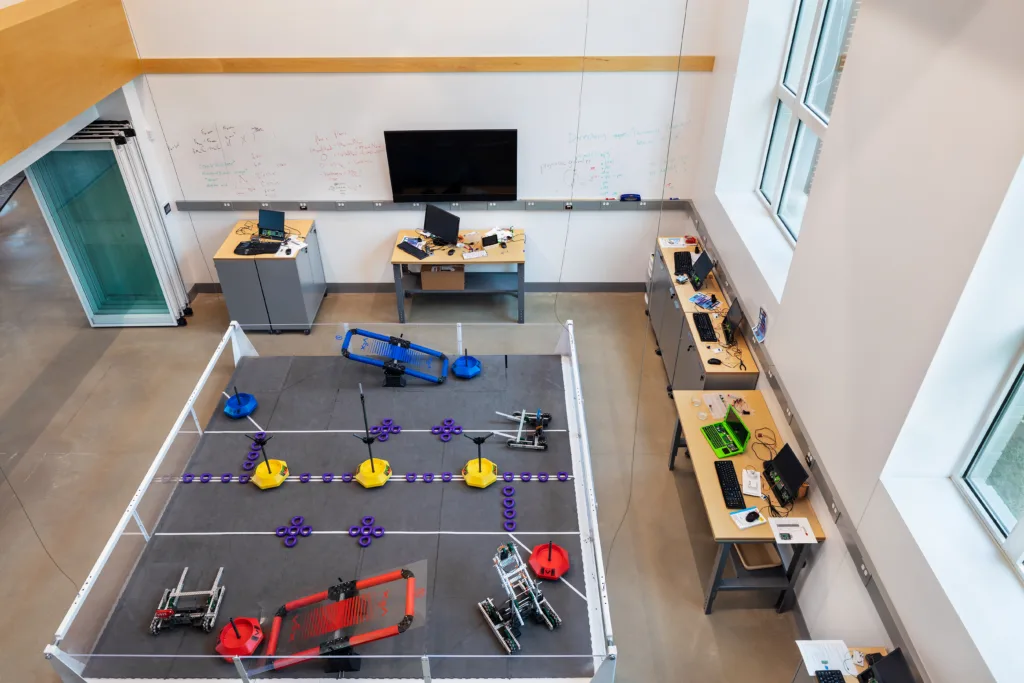
Designing for a Workforce-Driven Future
As K-12 schools, technical colleges, and universities embrace their expanded role in career preparation, educational design must evolve to:
- Create flexible, tech-enabled spaces that adapt to emerging industries.
- Embed early career exposure into K-8 learning experiences.
- Support hybrid environments that blur the line between school, workplace, and community hub.
- Prioritize industry partnerships and real-world project learning at every level.
Career and Technical Education (CTE), Work-Based Learning (WBL), and Career/College Readiness position school districts and institutions create the next generation of workforce-focused learning environments. From elementary career awareness labs to university-based innovation hubs, these spaces inspire curiosity, foster technical mastery, and connect students to meaningful, future-ready career pathways.

